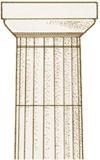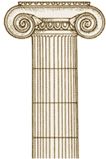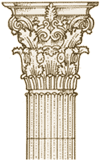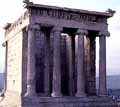The Ancient Greece was in the 1200 B. C. approximately.
The sea at the south was the Mediterranean.
The Greek gods and goddess have a human form, and the personality of them was the same as the humans too. And there were a lot of them. One for each thing.
Zeus was the king of all gods, god of the sky; and Hera his wife as the queen. Athena the goddess of wisdom and war. Poseidon god of the sea. And Hades the god of the underworld. Nike was the goddess of victory.
The Greeks believed these gods lived in one place named Mount Olympus.
There was a poet that writes two books refer to the Greece mythology, the Iliad and the Odyssey. He was named Homer.
A philosopher Greek was Plato, very famous for many things.
Aristotle was another philosopher who writes about a lot of topics like ethics, philosophy and politics.
A Greek doctor was Hippocrates, and nowadays is named the father of medicine.
Socrates was a very famous orator.
Euclid was a mathematician who used a kind of geometry. And nowadays he is very famous.
The Greeks used a type of government named democracy; the meaning of this word is power of the people.
Polis was a city-state where the people participated in a kind of government.
The women could not vote and stayed at home.
The Greek economy was based on Trade.
Each for years was played games named the Olympics games.
Ancient Greek Pottery There were four stiles of painting pottery: Geometric stile, black figure, red figure and white figure.
The Geometric style predominant from 900 to 700 B.C. It was when the painting had geometric shapes around with some animals or another natural shapes.
Black figure around 600 to 480 B. C. It was a mix of clay and water, and you can see the orange clay, and the painted with a black paint.
Red figure around 530 to 450 B.C. These were painted with black details and background, and figures in red.
White ground around 450 to 400 B. C. The background was formed with white clay. The figures in black, and sometimes-another colors.
There was six shapes of pottery: Hydria, Lekythos, Krater, Amphora, Kylix and Oenochoe.
Hydria, this come from a Greek word, the meaning is water. It was used to get water.
Lekythos was used for the perfume or oil, usually used in ceremonies.
Krater, these word means mix, in Greek. It was used to mix wine and water.
Amphora, these word means to carry on both sides. IT was used to transport wine or another liquids. But sometimes it was used to transport grains or olives.
Kylix it was used to drink wine.
Oenochoe, it means wine-pourer. And it was used to serve wine.
Ancient Greek Architecture There were three types of columns: Doric, Ionic and Corinthian. 


In the Parthenon were used Doric columns. In the Erechtheum Ionic columns. Temple of Athena Nike was used Ionic columns. And in the Propylaea Doric Columns.
These 4 architectural structures were located in the Acropolis.
Acropolis come from the Greeks words: Acro and Polis. Together these words mean The submit of the city
Pericles was the one who directed the construction of the Acropolis.
The Parthenon was dedicated to Athena goddess of wisdom and war.
Parthenos means a sign of power and achievement
Ictinus and Callicrates designed the Parthenon. 
And to build it takes 14 years. On each side it have seventeen Doric columns. At the front and the back it have 8 columns.
Frieze is a line of relief sculpture that goes along the top of a building.
The frieze on the Parthenon illustrates the Pan-Authentic Procession.
Erechtheus was the foster son of Athena and King Athens.
The Erechtheum take 16 years to build it.
It was dedicated to Athena and Poseidon.
Porch of the Caryations or porch of the Maidens was the name of one of the Erechteum where you can find sculptures of six women. 
The temple f Athena Nike was designed for Callicrates,the construction was complete in 410 B.C.
This temple was dedicated to Athena and Nike.
The frieze on the temple illustrates Athena and her best friend Nike.
The purpose of the Propylaea was as entrance to the Acropolis. Mnesicles designed it.It was built from 437 to 432 B. C. 
Ancient Greek Sculptures The periods of sculpture were: Archaic style, Early Classical Style, Fifth-Century Classical Style, late classical and Hellenistic Style.
In the Early classical a example of sculpture is Poseidon/Zeus.
An example of Archaic is New York Kouros and Peplos Kore.
Some examples of Fifth Century are Critios Boy, Coryphorus and Wounded Amazon.
And of Hellenistic , some examples like Head of Alexander, Old Market Woman and Winged Nike.
Late Classical is Hermes and Dionysio.
The firs period of sculpture start in 660 B. C. and the last period finish in 31 B.C.
The Greeks learn how to make sculptures from the Egyptians.
The New York Kuros and the Peplos kore are made of Marble.
The sculptures from the Early Classical Style and Fifth Century Calssical Style are idealized.
Contrapposto is the name of a position, when a person is relaxed and has one leg bent.
During the Early Classical Style the new material that was used to make sculptures was bronze.
The most important fifth Century classsical Sculptor is Polyclitus.
Doryphorus originally was made of bronze.
The most improtant Late Classical Sculptor is Praxiteles.
The shape of the possition called the Praxitelean curve as seen in the Late Classical sculpture called Hermes and Dyonisius is an S.
Supposedly Hermes have originally in his right hand that the child Dionysus is trying to reach some grapes. |




